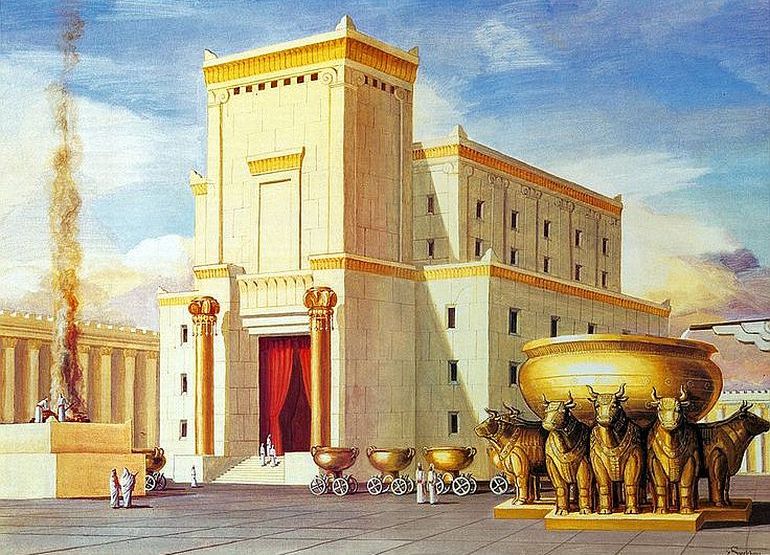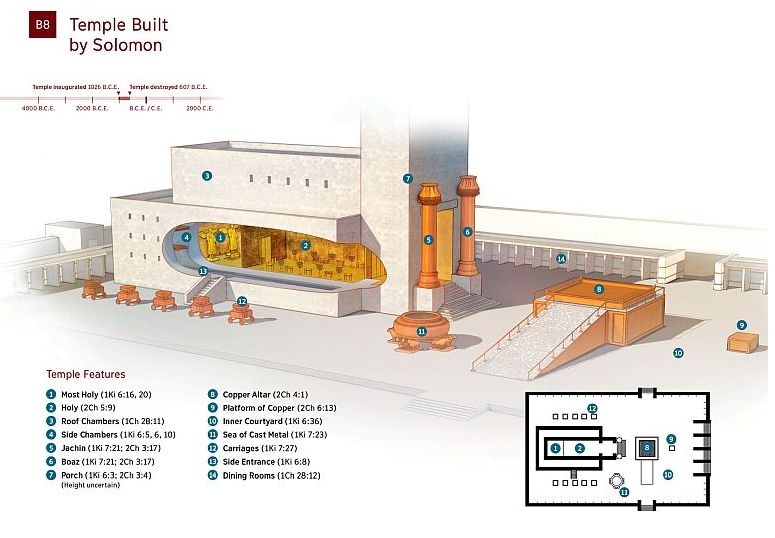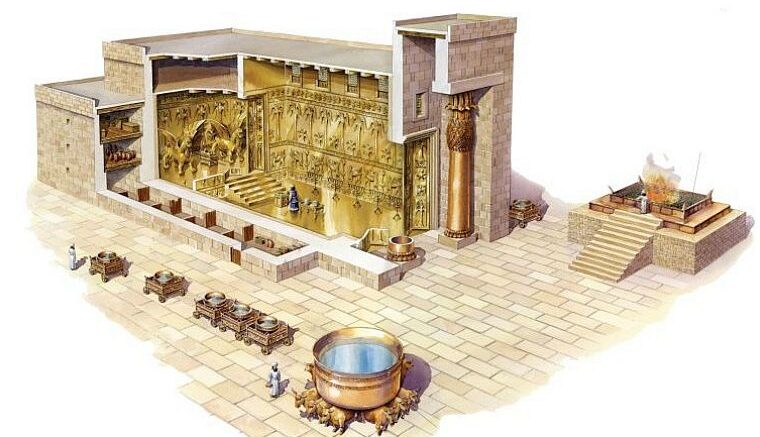Introduction
An almost 3,000-year-old grand yet lost temple or just a figment of a religious fable? Solomon’s Temple or the First Jewish Temple has raised debates for centuries over its mere existence. According to Biblical traditions (including the Old Testament), the massive religious structure mentioned with incredible details was the centerpiece of the Jerusalem sanctuary. It was erected on the humongous man-made plateau, circa 960 BC (according to conventional sources).
Taking the slightly more ‘sensational’ route, Solomon’s Temple was also the chosen building that supposedly housed the Ark of the Covenant. Unfortunately, archaeology has still not been able to reveal much about the presence of any such ancient monument. Moreover, in our current circumstances, political affairs play a big role – with the Temple Mount (the aforementioned man-made plateau) ‘also’ hosting what is considered the oldest extant Islamic architectural specimen of the world – the Dome of the Rock (or Qubbat As-Sakhrah).
The Short History of Temple Mount

Originally built during the reign of the Umayyad Caliphs (that correspond to the Islamic golden age in arts and architecture), the Dome of the Rock was constructed upon the Temple Mount, with the ‘rock’ on the site pertaining to the revered scene of the Prophet Mohammad’s Night Ride, when he supposedly ascended heaven to have an audience with God.
Suffice it to say, Muslims consider the site sacred, with the ‘rock’ still being displayed inside the Qubbat As-Sakhrah shrine. On the other hand, Jewish people also consider the Temple Mount a venerable site, due to its intrinsic connection with the fabled Solomon’s Temple (along with the evidenced Second Jewish Temple).
Now in terms of historical evidence for Solomon’s Temple, one major factor that has acted as a detriment relates to the political climate in Jerusalem. This ancient city had always dealt with complexity in terms of politics, and its historical record aptly makes it clear – since ancient times, Jerusalem had been besieged 23 times, attacked 52 times, changed hands (between ruling factions) 44 times, and had been destroyed and rebuilt twice!
However, by the 12th century AD, the Temple Mount was governed by a special Islamic religious authority called the Waqf, originally installed by Saladin. Now, while currently, Israeli authorities share security responsibilities with the Waqf, people of other faith (including Jewish) are still banned from praying inside the holy precinct.
Such limitation of activities also stretches to archaeology. As a consequence, researchers and historians have not been able to fully analyze the possible remains or pieces of evidence on the Temple Mount that might provide clues to the existence of Solomon’s Temple. Interestingly enough, back in 2007, employees of the Waqf Muslim religious trust came across artifacts (including ceramic bowl rims, bases, and body sherds along with remains of juglets) during their routine maintenance on the revered site.
On later assessment, these objects were judged to date from the eighth to sixth centuries BC. It should also be noted that as opposed to conventional Biblical sources, Seder Olam Rabbah (a 2nd-century AD Hebrew language chronology) places the date of construction of the Solomon’s Temple much later in 822 BC.
Furthermore, according to the Biblical Archaeology Society –
Fortunately, several Iron Age temples discovered throughout the Levant bear a striking resemblance to the Temple of King Solomon in the Bible. Through these remains, we gain extraordinary insight into the architectural grandeur of the building that stood atop Jerusalem’s Temple Mount nearly 3,000 years ago.
As reported by archaeologist John Monson in the pages of BAR, the closest known parallel to the Temple of King Solomon is the ’Ain Dara temple in northern Syria. Nearly every aspect of the ’Ain Dara temple—its age, its size, its plan, its decoration—parallels the vivid description of the Temple of King Solomon in the Bible. In fact, Monson identified more than 30 architectural and decorative elements shared by the ’Ain Dara’ structure and the Jerusalem Temple described by the Biblical writers.
Reconstruction of the Temple of Solomon

In any case, the ultimate purpose of this article is NOT to debate the existence (or lack thereof) of Solomon’s Temple. We instead wanted to demonstrate what the Temple of King Solomon might have looked like if it was actually constructed in accordance with the measurements mentioned in Biblical sources.
In the video below, Daniel Smith concocted a superb 3D animation that demonstrates both the exterior and interior of the religious structure – the ‘Holy House’ (or Beit HaMikdash in Rabbinic literature). All his virtual measurements were taken in accordance with the figures mentioned in 1 Kings 6-7. As Smith said –
Visualize Solomon’s temple in all its glory in this amazing 3D animation based on scriptural, archaeological, and historical research. Solomon’s temple stood in Jerusalem for almost 400 years, and was the center of worship for all of Israel.
In case you are interested in the commentary about the measurements used for Solomon’s Temple, you can take a gander at the animated video presented below, made by Smith back in 201 (using SketchUp 2016) –
And finally, if you are interested in the religious significance of the famed Solomon’s Temple, especially when it came to Biblical references, you can check out the extended animated video presented below, once again made by Daniel Smith –
Featured Image: ESV Study Bible Illustration
All Videos Source: MessagesOfChrist
Note* – The article has been updated to reflect newer reconstructions made on the subject.

Be the first to comment on "Remarkable Reconstruction of Solomon’s Temple In Accordance with Biblical Figures"